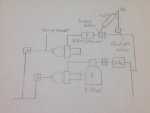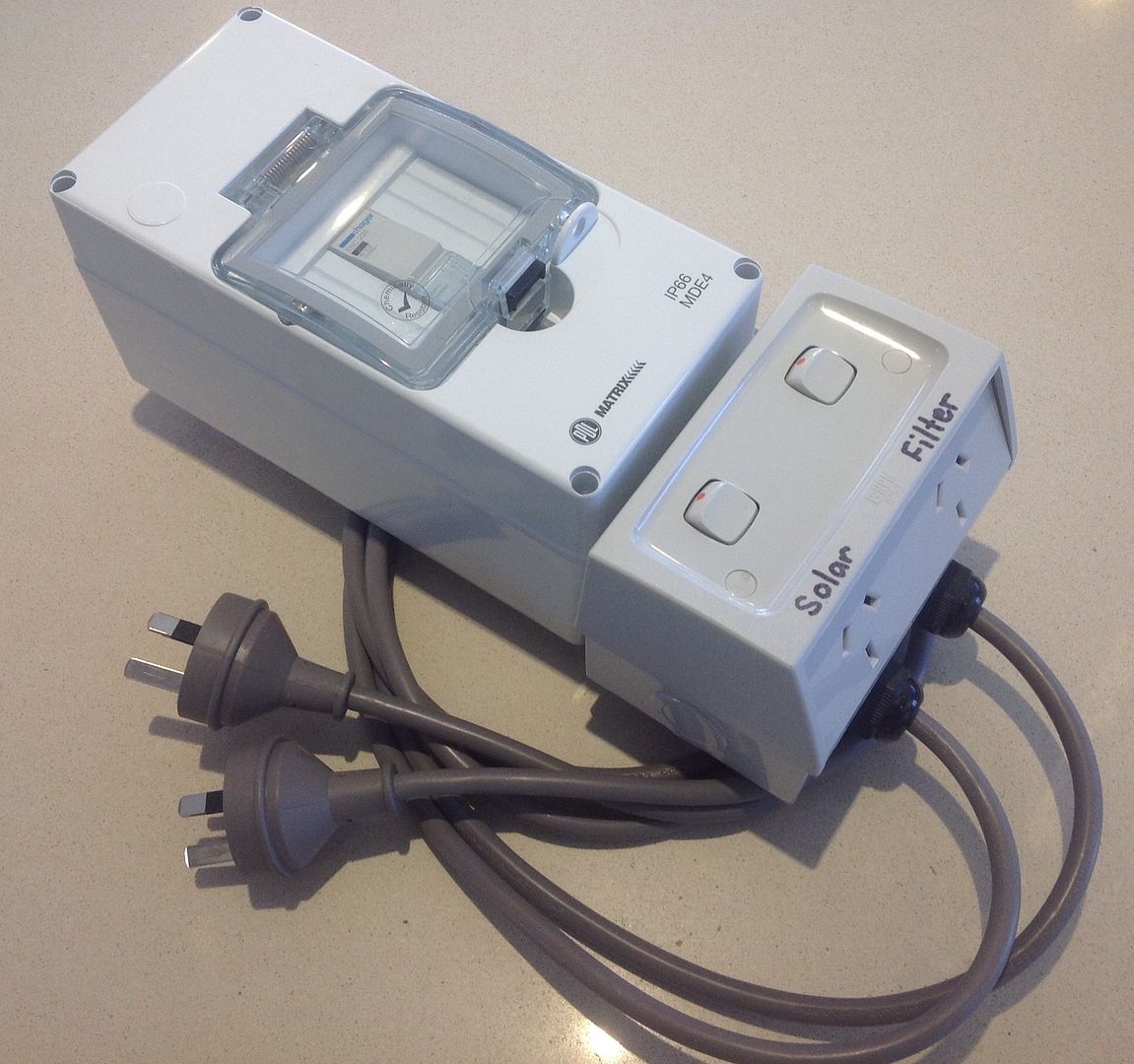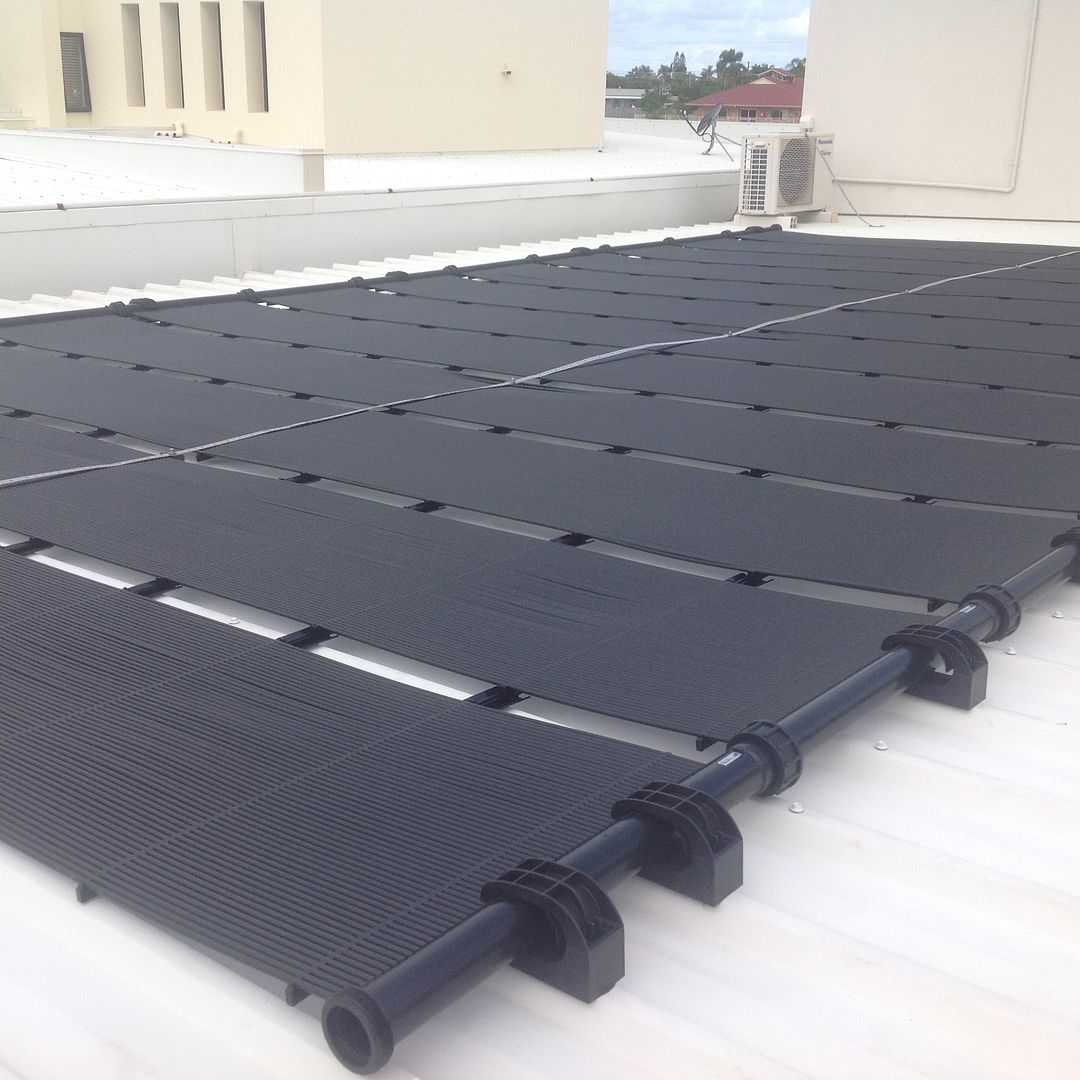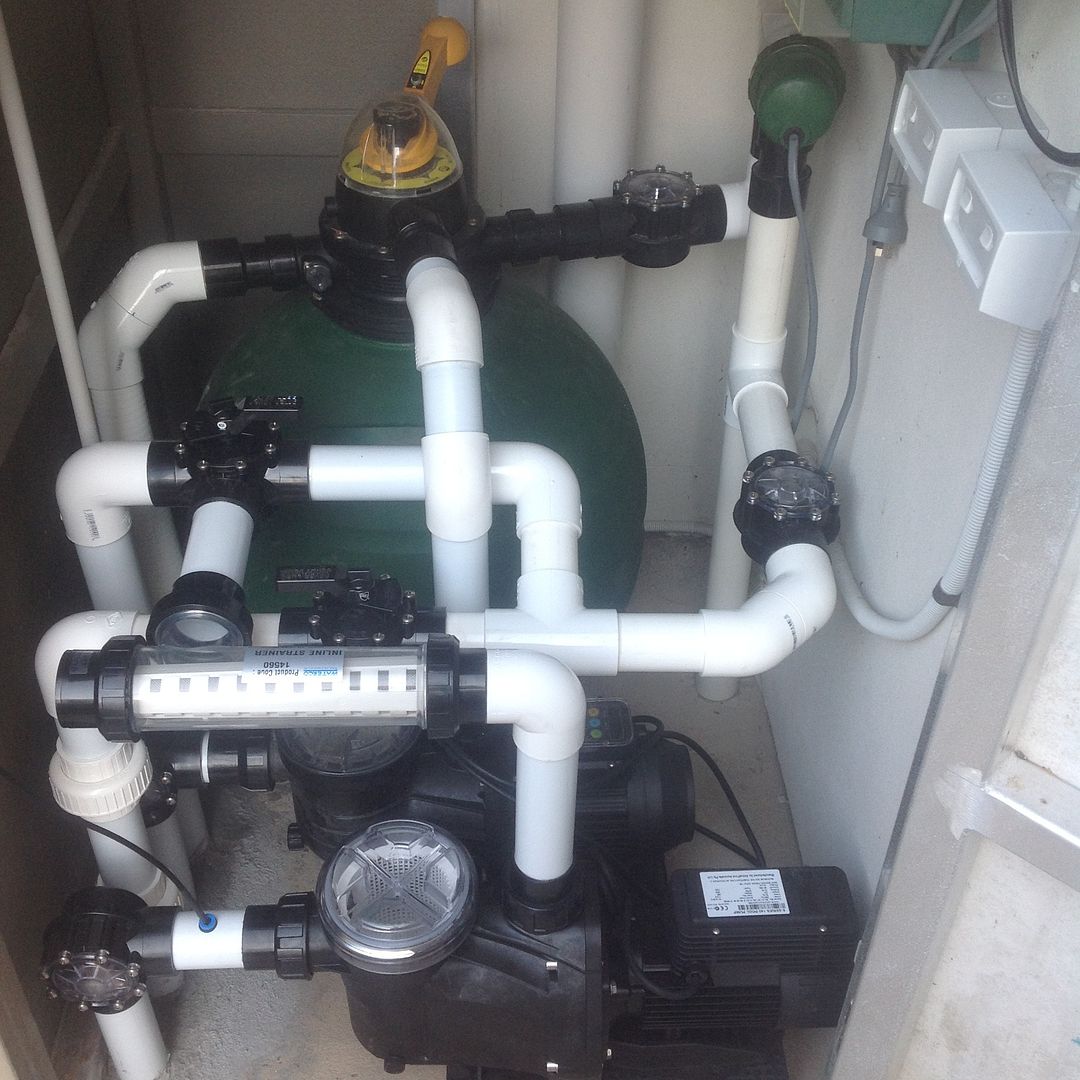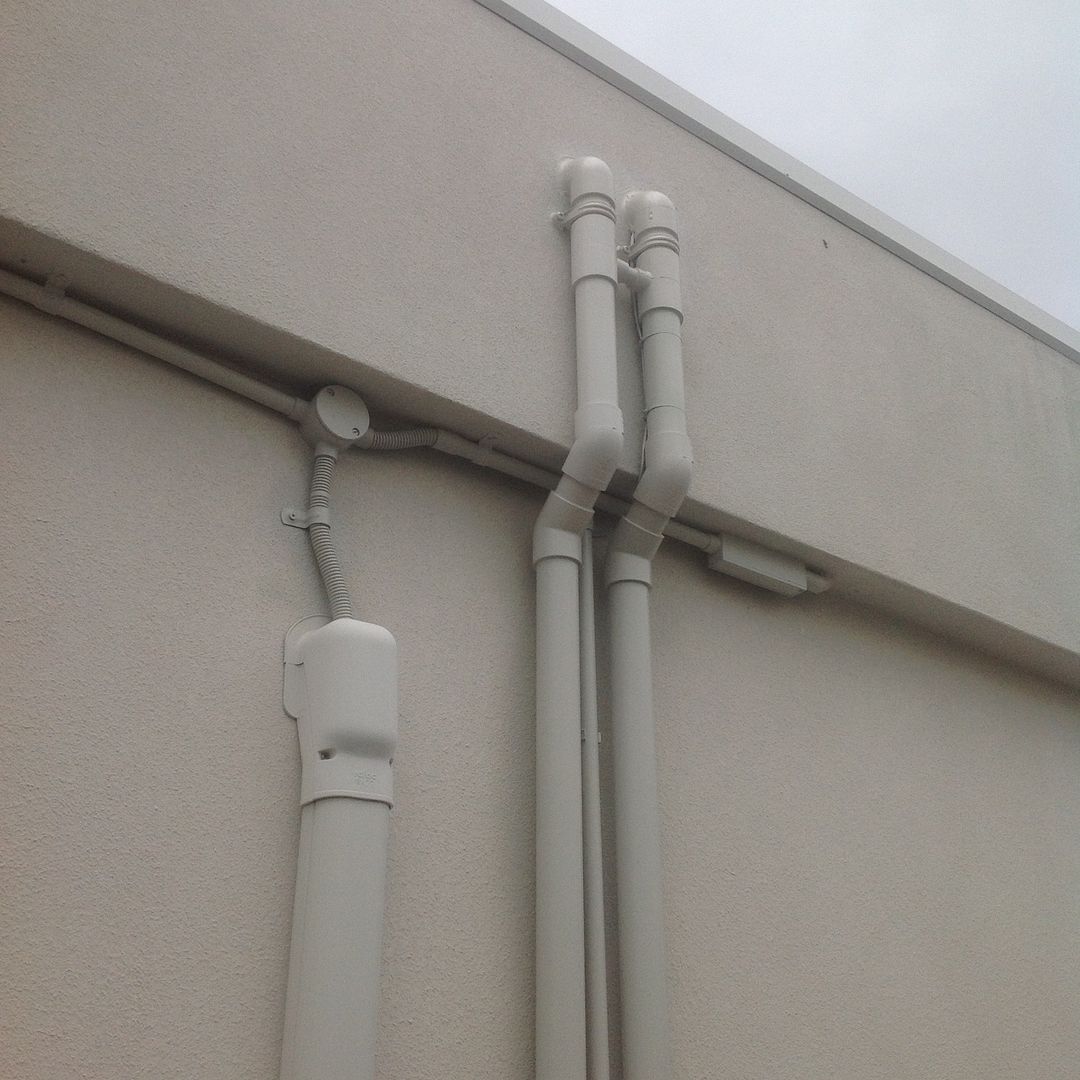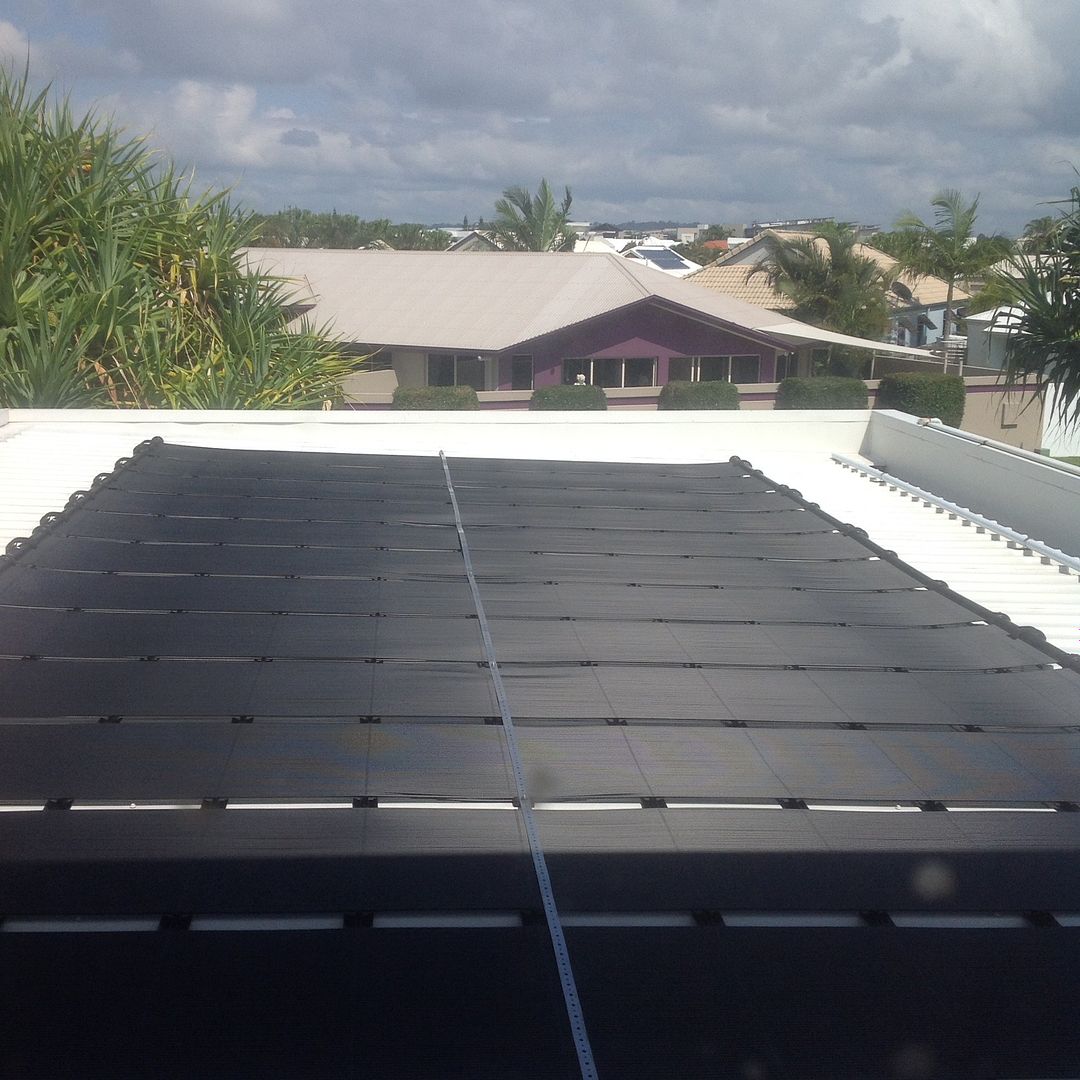- Sep 23, 2015
- 1,564
- Pool Size
- 20000
- Surface
- Plaster
- Chlorine
- Salt Water Generator
- SWG Type
- Astral Viron V25
Hi all and thanks for helping.
I'm in the process of ordering the solar pool heating and need to finalise the plumbing schematics. The system is a little unique, two rumps running independant off the same 2" suction and return line. The filter pump will run for 2 hours early morning and evening leaving the solar pump free to do it's thing during the day. I'm using a relay switch to ensure both pumps can never be on at the same time.
Excuse my rough drawing but this is the schematics.
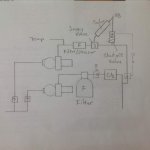
Both pumps need to have a non return each. The schetch shows these before the pumps but would they be better after the pumps?
Do I need a non return after the filter to prevent the solar return from pushing water through the filter?
Most schematics have a non return after the solor panels or on the return line. Do I need one and where should it go? Immediatly after the solar return enters the filter area or after the bypass, just before the solar return enters the main return?
Thanks for any advise.
Cheers, Steve.
I'm in the process of ordering the solar pool heating and need to finalise the plumbing schematics. The system is a little unique, two rumps running independant off the same 2" suction and return line. The filter pump will run for 2 hours early morning and evening leaving the solar pump free to do it's thing during the day. I'm using a relay switch to ensure both pumps can never be on at the same time.
Excuse my rough drawing but this is the schematics.

Both pumps need to have a non return each. The schetch shows these before the pumps but would they be better after the pumps?
Do I need a non return after the filter to prevent the solar return from pushing water through the filter?
Most schematics have a non return after the solor panels or on the return line. Do I need one and where should it go? Immediatly after the solar return enters the filter area or after the bypass, just before the solar return enters the main return?
Thanks for any advise.
Cheers, Steve.


